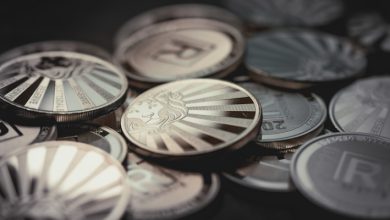The Role of Tokenization in Unlocking New Asset Classes

- Understanding the concept of tokenization
- Exploring the benefits of tokenizing assets
- The impact of tokenization on traditional investment strategies
- Challenges and opportunities in tokenizing new asset classes
- Regulatory considerations in the tokenization of assets
- Case studies of successful tokenization projects
Understanding the concept of tokenization
Tokenization is a process where real-world assets are converted into digital tokens that can be traded on a blockchain. This process allows investors to purchase fractions of assets, making it more accessible to a wider range of people. By tokenizing assets, investors can benefit from increased liquidity, lower transaction costs, and improved transparency.
Tokenization has the potential to unlock new asset classes, such as real estate, art, and even intellectual property rights. By digitizing these assets, they can be divided into smaller units, allowing investors to diversify their portfolios and mitigate risk. Additionally, tokenization can streamline the process of buying and selling assets, reducing the need for intermediaries and increasing efficiency.
One of the key advantages of tokenization is its ability to democratize access to investments. By allowing investors to purchase fractions of assets, tokenization makes it possible for individuals to invest in assets that were previously out of reach. This can help to level the playing field and create new opportunities for a wider range of investors.
Overall, understanding the concept of tokenization is crucial for unlocking the full potential of this technology. By tokenizing assets, investors can benefit from increased liquidity, lower transaction costs, and improved transparency. As more assets are tokenized, the financial landscape is set to undergo a significant transformation, opening up new opportunities for investors around the world.
Exploring the benefits of tokenizing assets
Tokenizing assets offers a wide range of benefits that can revolutionize the way we invest and trade. By converting traditional assets into digital tokens, investors gain access to increased liquidity, fractional ownership, and enhanced transparency.
One of the key advantages of tokenization is the ability to fractionalize assets, allowing investors to own a portion of an asset rather than the whole thing. This opens up investment opportunities to a broader range of individuals who may not have the capital to buy an entire asset outright.
Furthermore, tokenization provides increased liquidity by enabling assets to be traded on digital exchanges 24/7. This means that investors can buy and sell tokens at any time, increasing the efficiency and speed of transactions.
Another benefit of tokenization is the transparency it brings to asset ownership. Each token represents a unique digital record on a blockchain, providing a clear and immutable ledger of ownership. This reduces the risk of fraud and improves trust among investors.
In conclusion, tokenizing assets offers a wealth of benefits that can reshape the traditional investment landscape. From fractional ownership to increased liquidity and enhanced transparency, the potential for tokenization to unlock new asset classes is vast. As more industries adopt this technology, we can expect to see even greater innovation and growth in the financial sector.
The impact of tokenization on traditional investment strategies
Tokenization is revolutionizing traditional investment strategies by providing access to a wider range of asset classes that were previously inaccessible to the average investor. This innovative technology allows for the fractional ownership of assets, making it easier for individuals to diversify their portfolios and mitigate risk.
One of the key impacts of tokenization on traditional investment strategies is the increased liquidity it offers. By digitizing assets and creating tokens that can be easily traded on blockchain platforms, investors can quickly buy and sell their holdings without the need for intermediaries or lengthy settlement processes.
Furthermore, tokenization allows for greater transparency and security in investment transactions. The use of blockchain technology ensures that all transactions are recorded on a decentralized ledger, reducing the risk of fraud and improving trust between parties.
Another significant advantage of tokenization is the ability to unlock new opportunities in alternative asset classes such as real estate, fine art, and venture capital. By tokenizing these assets, investors can gain exposure to markets that were previously reserved for institutional players or high-net-worth individuals.
In conclusion, the impact of tokenization on traditional investment strategies is clear: it democratizes access to a diverse range of asset classes, enhances liquidity, transparency, and security, and opens up new opportunities for investors to achieve their financial goals.
Challenges and opportunities in tokenizing new asset classes
Tokenization presents both challenges and opportunities when it comes to unlocking new asset classes in the financial market. One of the main challenges is the regulatory environment, which can vary significantly between different jurisdictions. Navigating these regulations can be complex and time-consuming for businesses looking to tokenize new assets.
Another challenge is the lack of standardization in tokenization processes and platforms. This can make it difficult for investors to compare different tokenized assets and assess their value accurately. Additionally, there may be concerns about security and fraud in tokenization, as blockchain technology is still relatively new and evolving.
On the other hand, tokenization offers exciting opportunities for investors and businesses alike. By tokenizing new asset classes, such as real estate or fine art, investors can gain access to previously illiquid markets and diversify their portfolios. Tokenization also allows for fractional ownership, making it easier for smaller investors to participate in high-value assets.
Furthermore, tokenization can streamline the process of buying and selling assets, reducing transaction costs and increasing liquidity. This can open up new opportunities for businesses to raise capital and for investors to trade assets more efficiently. Overall, while there are challenges to overcome, the potential benefits of tokenizing new asset classes are significant.
Regulatory considerations in the tokenization of assets
When considering the tokenization of assets, it is crucial to take into account the regulatory landscape surrounding this innovative financial technology. Regulations play a significant role in shaping the tokenization process and ensuring compliance with legal requirements.
One key consideration is the need to adhere to securities laws when tokenizing assets. Depending on the jurisdiction, assets tokenized may be classified as securities, which would subject them to strict regulations imposed by securities authorities. It is essential for token issuers to understand and comply with these regulations to avoid legal repercussions.
Additionally, anti-money laundering (AML) and know your customer (KYC) regulations must be taken into account when tokenizing assets. These regulations are in place to prevent illicit activities such as money laundering and terrorist financing. Token issuers must implement robust AML/KYC procedures to verify the identity of token holders and ensure the legitimacy of transactions.
Furthermore, tax regulations can also impact the tokenization of assets. Depending on the jurisdiction, tokenized assets may be subject to capital gains tax or other taxes. Token issuers must consider the tax implications of tokenization and ensure compliance with tax laws to avoid any legal issues.
Case studies of successful tokenization projects
Several tokenization projects have successfully unlocked new asset classes, demonstrating the potential of this technology in transforming traditional markets. These case studies showcase the diverse range of assets that can be tokenized, from real estate to fine art.
- One notable example is the tokenization of a commercial real estate property in New York City. Through tokenization, investors were able to purchase fractional ownership in the property, allowing them to access an asset class that was previously out of reach.
- Another successful tokenization project involved the digitization of a rare piece of artwork. By tokenizing the artwork, collectors were able to trade ownership shares on a digital platform, opening up new opportunities for art investment.
- In the agricultural sector, tokenization has been used to fractionalize farmland, enabling investors to diversify their portfolios with exposure to this alternative asset class.
- Tokenization has also been applied to intellectual property rights, allowing creators to tokenize their work and receive royalties through smart contracts, streamlining the payment process.
These case studies demonstrate the versatility of tokenization in unlocking new asset classes and democratizing access to investment opportunities. As more industries embrace this technology, we can expect to see even greater innovation in the way assets are bought, sold, and traded.



